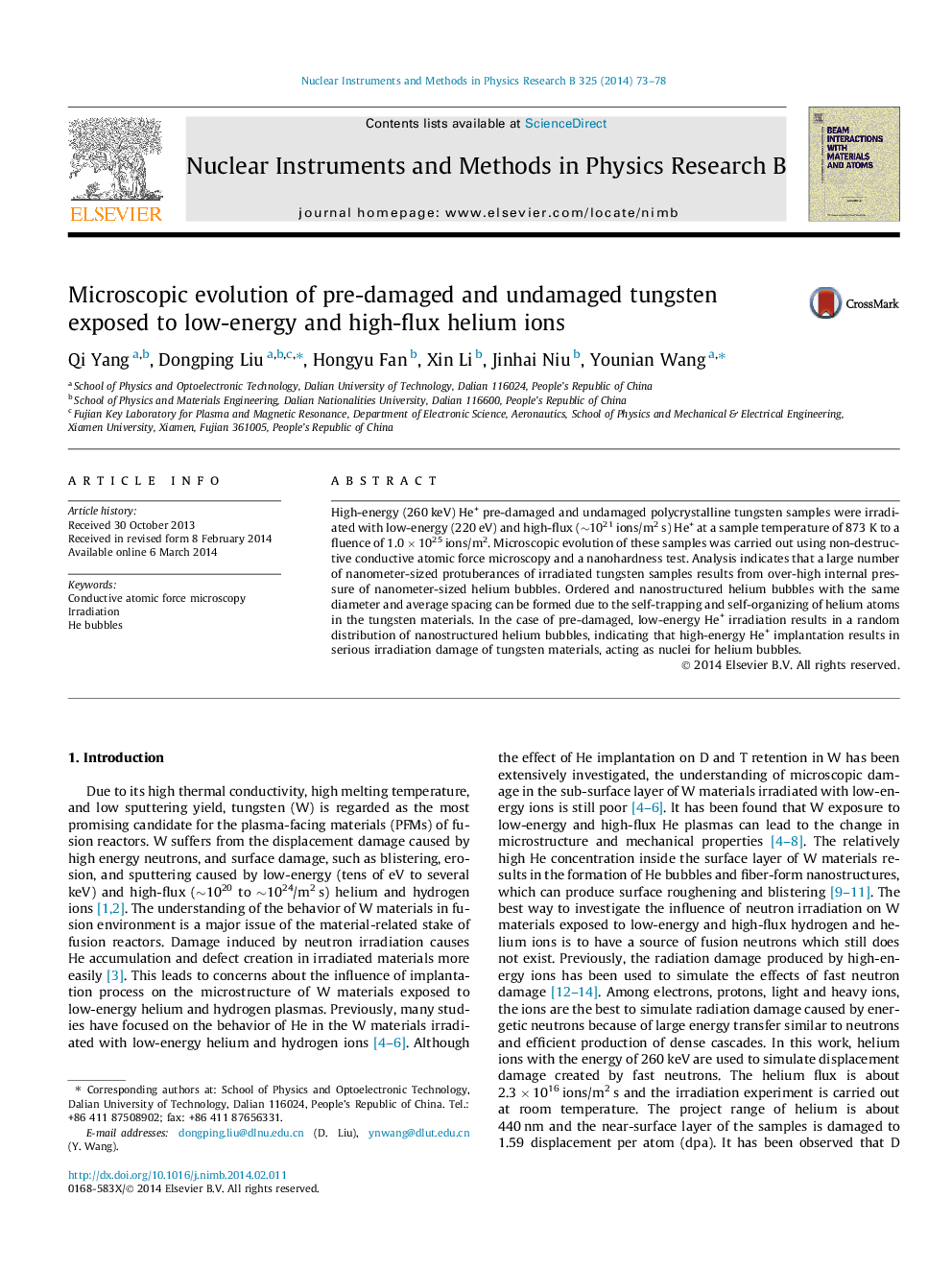| Article ID | Journal | Published Year | Pages | File Type |
|---|---|---|---|---|
| 1681310 | Nuclear Instruments and Methods in Physics Research Section B: Beam Interactions with Materials and Atoms | 2014 | 6 Pages |
High-energy (260 keV) He+ pre-damaged and undamaged polycrystalline tungsten samples were irradiated with low-energy (220 eV) and high-flux (∼1021 ions/m2 s) He+ at a sample temperature of 873 K to a fluence of 1.0 × 1025 ions/m2. Microscopic evolution of these samples was carried out using non-destructive conductive atomic force microscopy and a nanohardness test. Analysis indicates that a large number of nanometer-sized protuberances of irradiated tungsten samples results from over-high internal pressure of nanometer-sized helium bubbles. Ordered and nanostructured helium bubbles with the same diameter and average spacing can be formed due to the self-trapping and self-organizing of helium atoms in the tungsten materials. In the case of pre-damaged, low-energy He+ irradiation results in a random distribution of nanostructured helium bubbles, indicating that high-energy He+ implantation results in serious irradiation damage of tungsten materials, acting as nuclei for helium bubbles.
